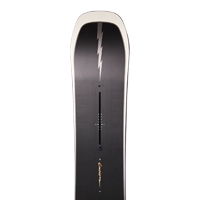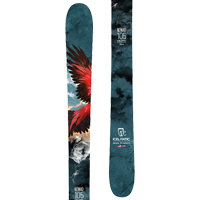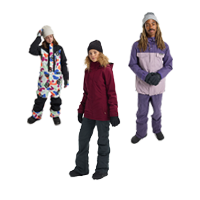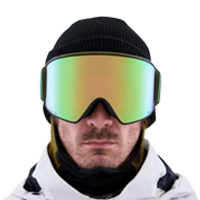Looking for your first wakeboard? or perhaps an upgrade? There are a few important things to consider when buying a new wakeboard and here we look at each aspect of buying and setting up a new board so you're informed and able to get the perfect board.
Boat and Park Boards:
The first and most broad distinction in buying a wakeboard is between boat and park boards. Park boards are designed with tougher bases and either shallow or no fins to allow for wear-and-tear over grind rails and jumps. Boat boards do not have to cater to the damage caused by contacting obstacles, so they can allocate more into lightweight materials, deeper fins and stiffer materials. Boat boards make up the majority of available boards and are what you should go for unless you know you specifically want a park board. Using the same board behind and boat and at park is generally not recommended, as boat boards will break quickly at a park and park boards are not ideal for riding behind a boat.
Profile:
A useful variable to consider is the board profile. The profile refers to the curvature of the board from tip to tail and there are two main profiles.
The first is continuous which features a smooth curve from tip to tail and results in a smooth, predictable, and consistent feel when you’re riding. This shape is ideal for, although definitely not limited to, beginner riders.

The second profile is 3-stage-rocker which is characterised by a sharp descent from the tip to mid-section, flat area across the middle, then a clear rise in the tip from the mid-section. The profile provides a more explosive pop of the wake. This shape also rides a little slower and is ideal for people looking to get big air in their jumps.

Boards will sometimes offer a blend of continuous and 3-stage-rocker to access benefits of both profiles.
Base shapes and materials:
Another important part of wakeboards is what the bottom is like. When you flip over a board its rarely completely flat. Various mechanisms all work together to help you manoeuvre on the water.
First off are channels; channels are exactly what you would intuit, they are indented lines which allow water to flow through, providing suction to the water and creating a feeling of stability.
Rails are protruding lines which run down the board to act as quasi-fins. They sit deeper in the water then other areas of the board, acting as an anchor point to help you turn and manoeuvre. More rails equal more grip, which may sound completely beneficial however the trade off is more challenge in pivoting on top of the water which is desirable when landing big jumps.
While we are in this ballpark, its useful to say something about fins. Deeper or longer fins create a more stable ride and reduce your ability to break the board free for surface tricks…actually, any tricks. Beginning riders often benefit from longer, deeper fins when they start riding. As you advance you may want to break the board loose with less effort by removing fins or selecting a board with less traction. A higher quantity of fins or fins placed near the outside edges of the wakeboard will be more effective. Removable fins can be unscrewed and removed from the wakeboard while moulded-in fins are glassed into the wakeboard and do not come off. Many wakeboards have moulded in fins toward the outside and removable fins closer to the centre. Moulded in fins are more durable on sliders. Removable fins give you more options to change the feel of your ride.
If you’re riding at a cables park, or hitting grind rails or jumps you will also benefit from a board with a grind base. Grind bases were developed in response to the increasing popularity of rail riding. This style of riding requires a tough base with exceptional durability to withstand the wear and tear from sliding over PVC, metal, or docks.
Size:

Some wakeboarders like to ride a board at the short end of their suggested size range. The feeling you get from a shorter wakeboard depends on the board’s shape, but in general, shorter boards are slower and take more energy to push through the water (the more surface area the board has on the water, the faster it will move across the surface). However, a shorter wakeboard is easier to spin and manoeuvre in the air as you flip or fly across the wake. However, the decreased surface area makes landings harder and the nose may tend to dig in which causes your nose and the rest of your face to dig into the water too.
Conversely, Longer wakeboards are typically easier to ride and learn on, they have a solid feel that will really boost you off the wake. Longer wakeboards are heavier which means you work harder against the weight in the air, but you also get more control so longer boards are great for learning tricks for the first time. A longer wakeboard has more surface area so it will sit on top of the water nicely and move quickly through the water. The increased surface area of a longer wakeboard will offer softer landings.
Skill Level:
A range of wakeboard shapes are available to suit different ability levels. In general, anyone can ride any shape wakeboard as long as it is large enough. Some shapes make it easier to learn, but a “beginner” should not shy away from an “advanced” board shape. Likewise, an “advanced” rider will not necessarily be restrained by riding a “beginner” board shape. The most important factor is selecting the right size. Choosing a wakeboard is a personal preference and should be fun; pursue your curiosities about a certain shape and allow a propensity for a great graphic factor into your decision.
Beginner-Intermediate
If you have never ridden before, ride occasionally, or are just beginning to cross the wake, check out beginner-intermediate wakeboards. In general, these wakeboards have continuous or mellow 3-stage rockers and tend to be priced for recreational riders.
Intermediate-Advanced
If you are crossing the wake in both directions and clearing the wake, take a look at intermediate-advanced wakeboards. There is a ton of variety in this category, so make sure you read up on the wakeboard features below to understand which features compliment your riding style before you decide on a wakeboard.
Advanced-Expert
If you know how to spin, are attempting new tricks, stomping inverts or wakeboarding while juggling horseshoes you probably want to look at advanced-expert wakeboards. In general, these wakeboards have aggressive continuous or 3-stage rockers and are less forgiving. Advanced-Expert Wakeboards are often rider pro models. The bottom line is that these wakeboards are aggressive. Now that you know your ability level, learn how the different features of your wakeboard will affect the feel of your ride.
Boots / Bindings:
If you buy a wakeboard, you will also need a set of wakeboard boots. Getting the right boots isn’t too complicated but it is essential. The first thing to consider is compatibility. Most bindings will fit on most boards but there are a few exceptions and if you are unsure, get in contact with our staff for help.
An important aspect of bindings is stiffness. When your riding, leg and ankle movement is distributed between the boot flex and the actual board movement; stiffer boot means more board movement. Riders should typically progress in boot stiffness in relation to skill level, but beginners can still use stiffer bindings and advanced riders can use soft bindings if preferred.
Additionally, features including BOA tightening system, advanced lace-lock systems and heat mouldable liners are good to look out for ease of use and increased comfort.
Miscellaneous and maintenance:
- Keep your wakeboard out of the sun for long periods of time. Sun damages gear just like skin.
- Rinse your gear with fresh water after use in salt water.
- Protect your investment with a wakeboard bag for storing and transporting. Bags fend off bumps, scratches and long exposure to the sun as well as protect your boat. Be sure to dry your wakeboard before leaving it in its bag for a long period of time.
- Store your gear in a cool, dry location.
- Check fin screws regularly
If you're still unsure or want more information, come in store or contact our staff for assistance at (02) 4577 5333










